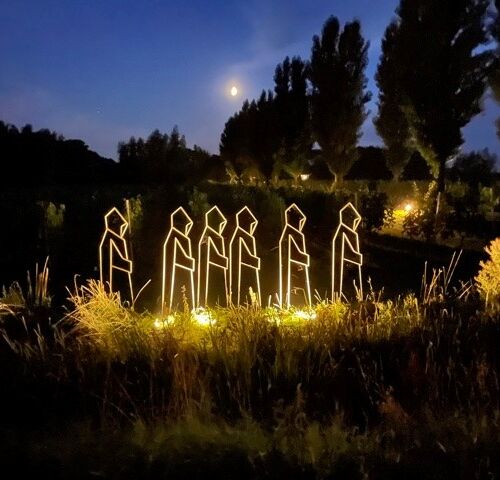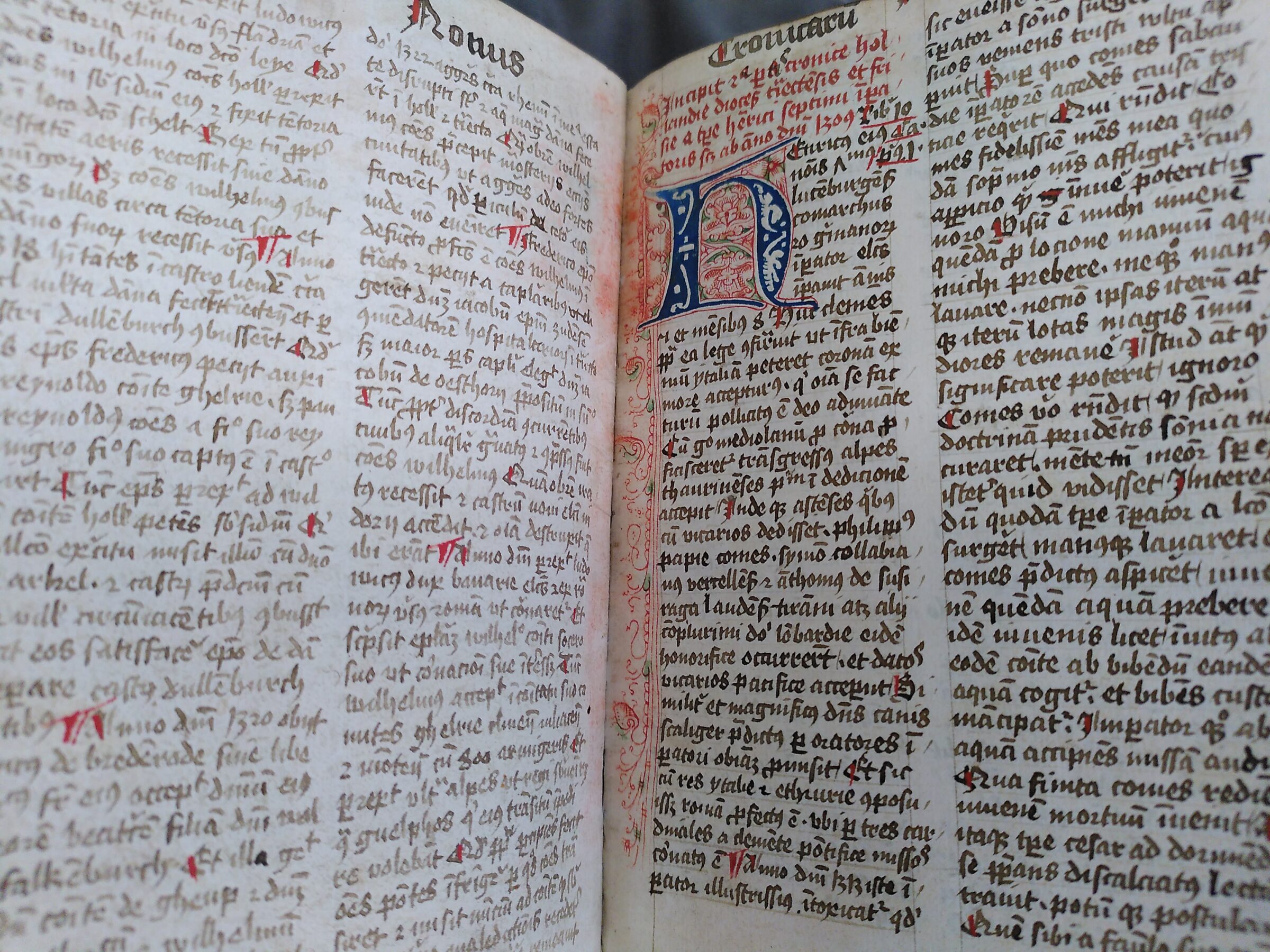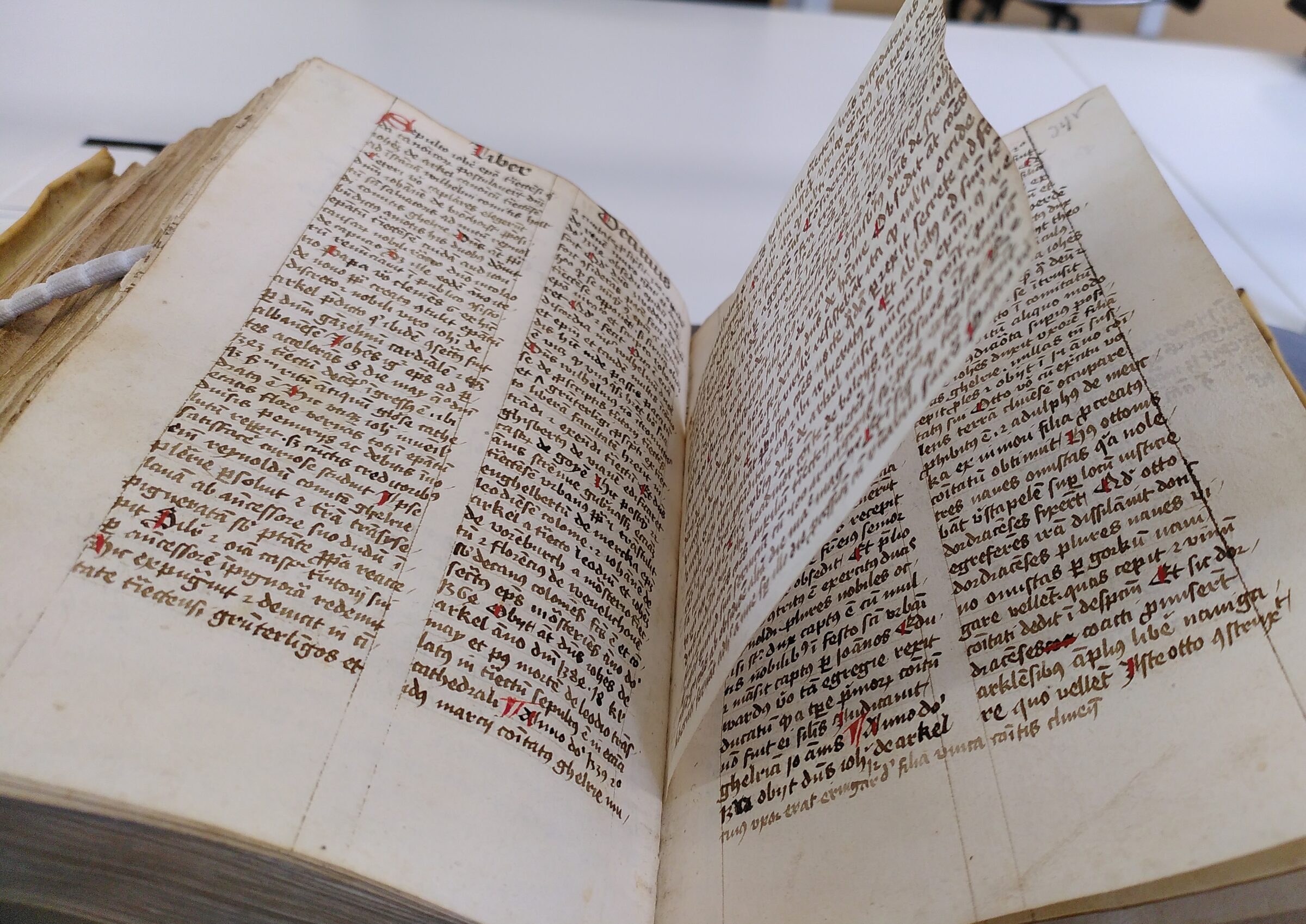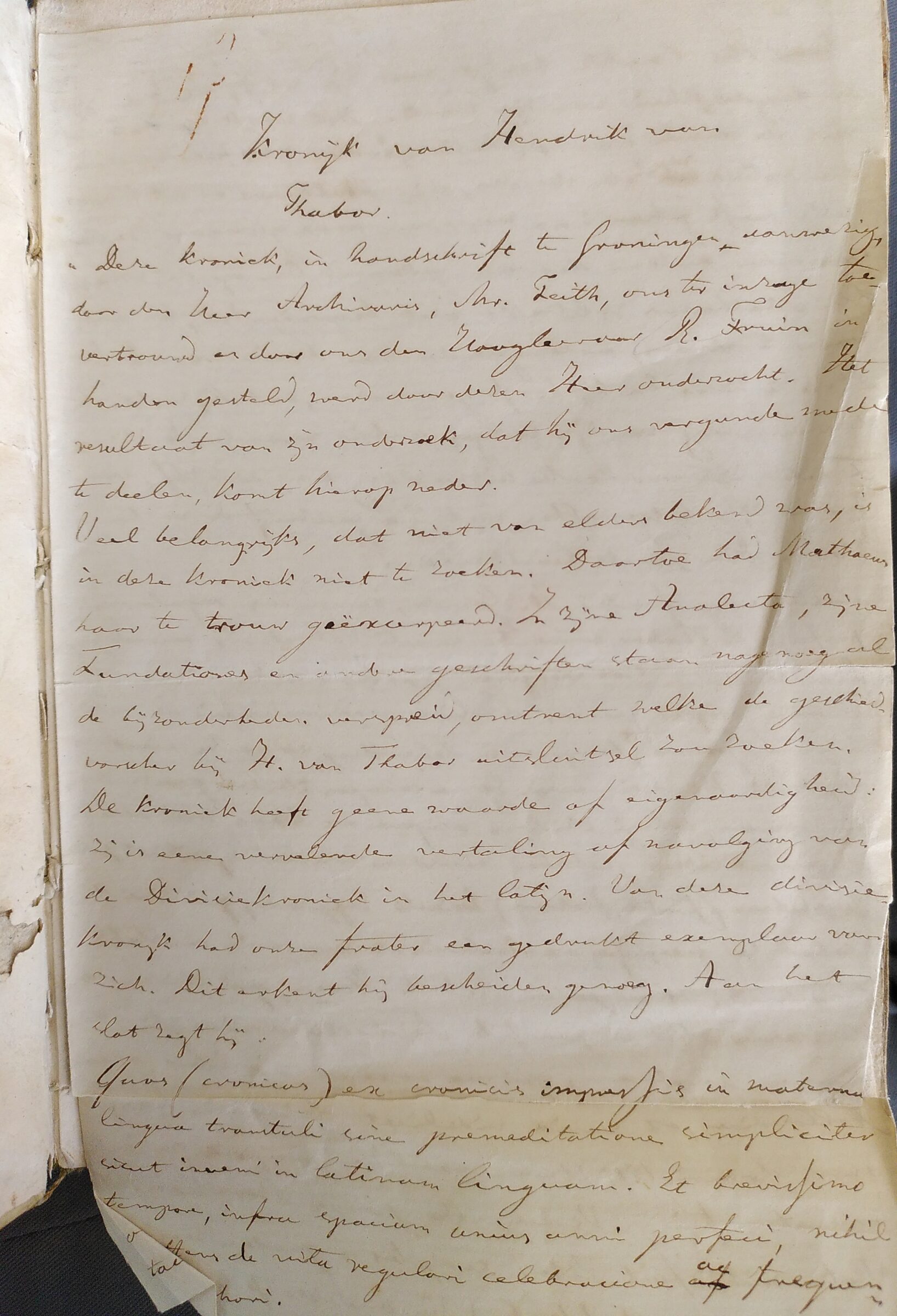
At this location, just outside the town of Sneek, you can now find the Thabor farm, which is currently being used as a campsite, a wedding location, and a vineyard. There is a small artwork in the garden, consisting of neon lights depicting six monks in habits. It refers to the location’s history: the farm was built on the site of the Thabor monastery. This monastery was in use from 1407 until 1580. It had been established by Rienck Bockema from Sneek.
The Thabor monastery joined the Congregation of Windesheim, which was named after its main monastery in Windesheim near Zwolle. These monasteries focused on a stricter religion. The Thabor monastery was mainly self-supporting: it had its own kitchen, hospital, cowshed, outbuilding, and cobbler’s workplace. But most important to the monastery were of course the monks, who were very productive: more manuscripts have been preserved from the Thabor monastery than from any other monastery.

Henricus Goude was one of the monks living in Thabor at the end of the sixteenth century. Due to the wars with Charles V in Friesland, he sometimes stayed in other monasteries, but he spent most of his time in Thabor, where he wrote this Chronicle.It is a history of the Netherlands in three volumes and nineteen books, covering all sorts of subjects: the Creation, popes and martyrs, wars in the Netherlands, Dutch saints, and political events up until 1522. The author (who devised the stories) is also the copyist (the actual writer of the text). This is unusual and it makes this an original manuscript.
Henricus completed the first version in 1508, but he added large sections in 1522. The result: a small but hefty book, with hundreds of pages of history written from the perspective of a medieval monk, handwritten in inkthat in some places has faded to brown over time. The later texts are written on sheets of paper that have been inserted between the existing pages. You can fold open the sheets, which makes this a sort of collage chronicle. Most of the texts contain few or no illustrations, but some of the initialsare lavishly decorated. The author even added his name to one of them. This is how we know now, centuries later, who wrote the book.


After the Thabor monastery was closed in 1580, the Chronicle changed hands several times. The first known owner outside the monastery was Menso Alting from Groningen, who had it in his possession in the seventeenth century. Menso Alting was a clerk in Selwerd, a judge in Sappemeer, and mayor of Groningen from 1686 until 1713. The name Alting occurs several times in the Special Collections of the University of Groningen Library: in various letters, in a travel diary, and in a geographical work.
Alting made his own notes in the Thabor Chronicle but also loaned the book to the famous Dutch lawyer Antonius Matthaeus III. Matthaeus was a professor of law and eventually became rector magnificus in Utrecht. Around 1702, he copied fragments from this manuscript. These can now be found in the National Library in The Hague. Matthaeus also mentions the Thabor Chronicle in several of his publications.

Menso Alting died in 1713, after which we do not find any mention of the book until 1833, when it appears in the municipal archives of the city of Groningen. Archivist H.O. Feith, a famous lawyer, Knight in the Order of the Lion of the Netherlands, and president of the Institute of the Deaf in Groningen, kept the book in the archives for years. After his death in 1849, he was succeeded as archivist by his son, H.O. Feith II. In 1872, he loaned the Thabor Chronicle to Robert Fruin, a well-known historian at the time. Fruin added a couple of pages with his own comments to the first part of the book; it is a kind of review, in which he writes that he was disappointed by the book. He calls the manuscript an ‘unpleasant translation or imitation of the Division Chronicle‘. Fruin was wrong about this: the Division Chronicle was written in 1517, while the first version of the Thabor chronicle was already completed in 1512. At any rate, Fruin found the manuscript disappointing. In 1897, the Groningen Archives donated the chronicle to the University of Groningen Library, where it has been kept since.
Author: Kjelda Glimmerveen







